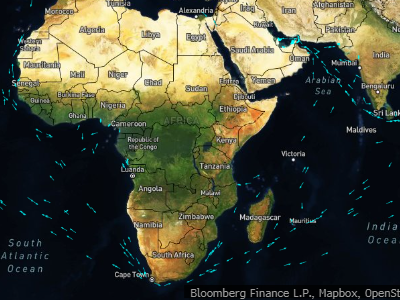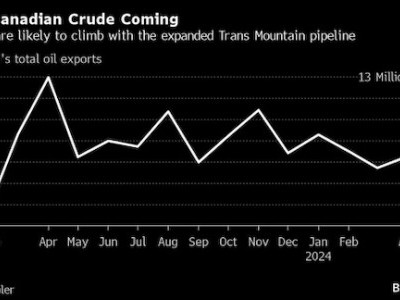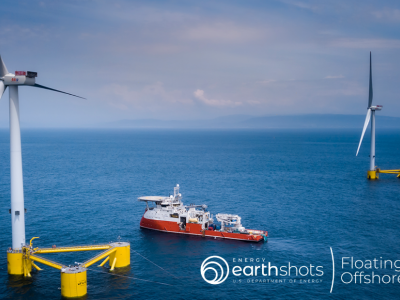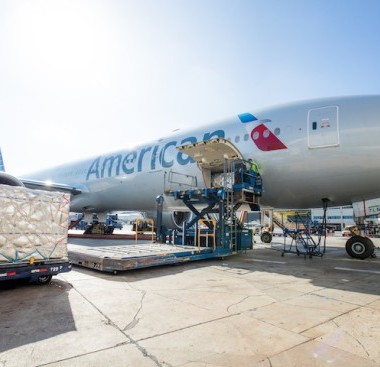Warm weather stoking increased demand considerations - Rystad Energy’s Gas and LNG Market Update
May 02, 2024"LNG prices this week seem to have stabilized, returning to expected patterns, reflecting a resurgence of fundamentals.
As scorching weather persists in Southeast Asia, prompting a natural desire to cool down, activity in the spot market naturally increases.
In the west, high storage was noted as the return of Freeport LNG looks set to support Henry Hub prices with an expected rise in demand for feedgas."
Following a period of uncertainty in global gas and liquefied natural gas (LNG) markets, prices have appeared to reflect a return to fundamentals.
Relatively weak demand and healthy storage in Europe and East Asia have allowed prices to soften.
Warmer weather is being forecast across Asia, and market players are observing whether an increase in demand for thermal generation to power cooling will provoke a demand for LNG on the spot market.
Title Transfer Facility (TTF) prices have been steadily falling from a peak of $10.43 per million British thermal units (MMBtu) on 16 April, down to $8.76 per MMBtu early on 30 April, before later increasing to $9.46 per MMBtu on 2 May.
The general decline came amidst a cold spell at the end of the month, indicating that if the forecasts for warmer weather ahead come true, demand is likely to be even more lukewarm.
East Asia Spot LNG prices for June deliveries saw a similar decrease from a peak of $11.26 per MMBtu on 16 April, down to $10.51 per MMBtu a week ago on 22 April and further went down to $10.26 per MMBtu as of 2nd May.
Henry Hub prices have remained relatively insulated despite earlier TTF and East Asia Spot LNG jumps.
Henry Hub prices are currently at $1.96 per MMBtu as of 2nd May, despite going up to $2.08 on 30 April.
The Henry Hub appears to be sitting around the $1.9 to low $2.0 range as mentioned earlier, as an anticipated return of Freeport is expected to prop prices up.
The current price is just slightly lower than $2.06 per MMBtu last week on 22 April.
Europe
Norwegian pipeline flows were at 269 million cubic meters per day (MMcmd) as of 29 April, as compared to 340 MMcmd as of 22 April a week ago.
Planned maintenance has started, with a number of maintenance activities affecting about 50 MMcmd of supplies, expected to last until mid-June.
With no extensions of planned maintenance since our last report, much of this decrease in pipeline supply has already been priced in.
Similarly, Russian pipeline flow remained steady at 82.34 MMcmd on 28 April, as compared to 89.75 MMcmd on 21 April a week ago.
Although Russian pipeline flows have fluctuated upwards to 94.60 MMcmd on 26 April before trending downwards, it has not affected balances in the European market amidst strong storage and weak demand exiting winter.
European underground storages were reported to be at 70.18 billion cubic meters (Bcm) as of 28 April, which is 61.6% full and already much higher than the 64.94 Bcm reported a year ago.
Although there have been withdrawals starting from 17 April due to a relatively cold spell nearing the end of April, the storage levels have remained resilient.
Weather forecasts are pointing towards warmer-than-expected temperatures until mid-May.
The readiness of inventories for the rest of the year is also reflected in the TTF contango structure, which remains relatively flat until November 2024, where we see TTF prices increase to about $10.74 per MMBtu, a $1.36 per MMBtu premium compared to today’s prices.
Hammerfest LNG resumed operations over the weekend of 27 to 28 April, with no reported capacity reductions since then.
This follows an extended outage from a gas leak that occurred on 23 April during planned maintenance.
Asia
Japan power utilities reported LNG inventories of 2.05 million tonnes (Mt) as of 21 April, which is 27% higher than the previous week, which reported 1.62 Mt.
This is higher than the 2.02 Mt reported for the five-year average from 2019 to 2023 but is lower than the 2.56 Mt reported on 23 April 2023 a year ago.
The return of inventory levels back to the five-year average may reduce prompt demand for restocking.
However, warm weather forecasts may spur an increase in demand for cooling, evoking more activity on the spot market.
The Japan Meteorological Agency (JMA) has forecast a 70% probability of above-normal temperatures across the country until 3 May.
May and June are expected to see a 50% probability of above-normal temperatures throughout most of the country, pointing towards a warmer-than-usual summer that may call for more heating demand.
Similarly, the Korean Meteorological Administration (KMA) forecasted a 60% probability of above-normal temperatures until 12 May and a 40% probability of above-normal temperatures until 2 June.
Northeast Asia buyers are still on the fence about returning to the market for spot acquisitions as they continue to monitor the effects of a warmer summer on inventories and orders that they have planned for the month.
Rains across most parts of China will keep temperatures lower than normal in the coming days.
Downstream demand is also reported to be weak, contributing to a lack of activity from Chinese players amidst current prices.
Warm weather continues to blanket Southeast Asia and South Asia.
Thailand has already reported record-high temperatures across many provinces for April, with exceptionally warm temperatures expected to persist.
Thai state-owned oil company PTT has continued its activity on the spot market, keeping in line with spot activity throughout most of the past year.
India has issued heat warnings across regions in east, south and west India, as heatwaves are expected through most of this week.
Despite high temperatures, the country’s demand for spot LNG is not expected to increase as spot generation prices are currently uneconomical against current power prices.


US
US gas production remained strong as oil prices stayed high.
Marketed production was reported to average 112.9 billion cubic feet per day (Bcfd) for the week ending 24 April 2024.
High storages were also reported, with 2,425 billion cubic feet (Bcf) as of 19 April 2024, which is a 92 Bcf injection as compared to the previous week.
The current storage levels are considerably higher than the 1,986 Bcf reported one year ago on 19 April 2023 and the 1,770 Bcf reported for the five-year average across the same period from 2019 to 2023.
Feedgas into LNG liquefaction facilities were reported at 11.89 Bcfd as of 28 April.
US liquefaction facilities were able to process about 14.5 Bcfd during December 2023, when US exports were at a monthly high.
Of note is Freeport LNG, which has been experiencing issues since early January.
The plant was reported to begin a return to capacity at the end of April, with one train already restarted and another being planned to restart as of the time of writing.
The return of Freeport LNG to capacity is likely to have supported Henry Hub prices as demand for feedgas will be expected to increase.

Similar Stories

Red Sea disruption is splitting global LNG trade in regions
View Article
One oil cargo’s odd journey highlights a global market in flux
View Article
Biden-Harris Administration celebrates progress in domestic floating offshore wind
View ArticleEngine Technology Forum calls on House leaders to prioritize action on the Diesel Emissions Reduction Act
The Engine Technology Forum issued the following statement from Executive Director Allen Schaeffer following the U.S. Senate’s passage of S. 2195.
View ArticleMOL and TotalEnergies sign time charter contracts for 2 newbuilding LPG-fueled LPG carriers
Mitsui O.S.K. Lines, Ltd. today announced that through its group company MOL Energia Pte. Ltd., it signed a time charter contract for two liquefied petroleum gas (LPG) dual-fuel very large…
View Article
Biden-Harris Administration announces $71 million investment to advance American solar manufacturing and development
View ArticleGet the most up-to-date trending news!
SubscribeIndustry updates and weekly newsletter direct to your inbox!




